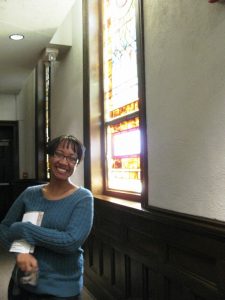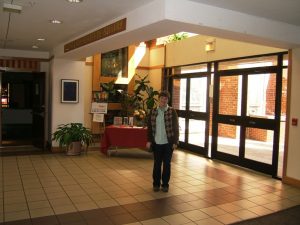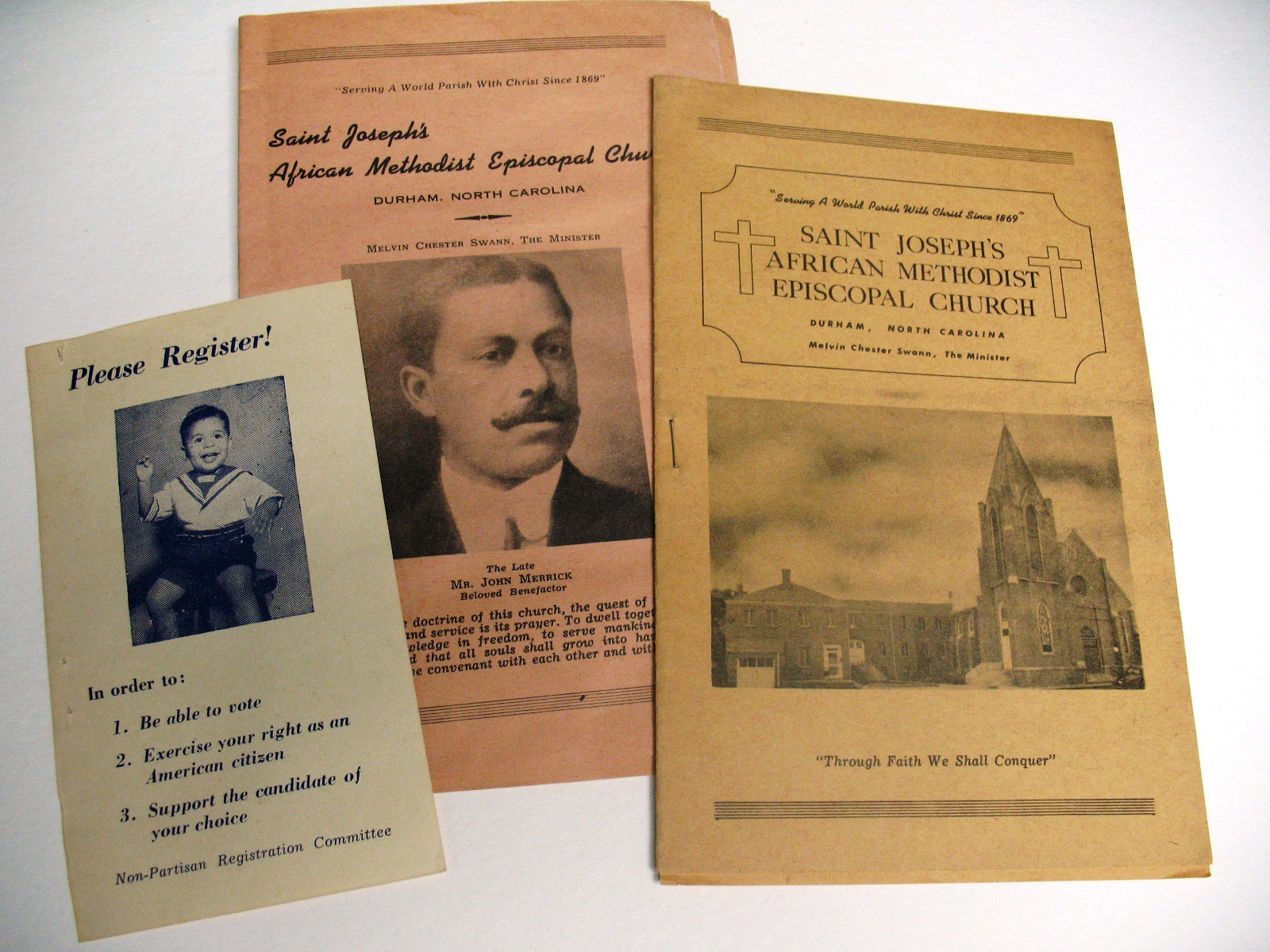
Recently Holly, my colleague here at the Southern Historical Collection, and I got the chance to tag along on a bus tour of Durham, N.C., with the Department of City and Regional Planning here at UNC-Chapel Hill. The tour focused on planning and development activities in several areas of downtown Durham, and how history and community influences, informs, and becomes an integral part of those activities. Holly and I were amazed at how visible history was at some of the places we visited, and were surprised at how connected our work and our collections at the SHC are to the work of these community organizers and city planners. We’d like to share a little bit about our trip, and connect some of the things we saw to materials we have here in the collection
Our first stop was at the Hayti Heritage Center, an African American cultural and educational center located in what was formerly the African American community of Hayti. The center, established in 1975, is based in the structure that was St. Joseph’s A.M.E. Church, a National Historic Landmark built in 1891. The space is now used to preserve the heritage of the neighborhood and the church, and holds programs aimed at “advancing cultural understanding and examining the experiences of Americans of African descent — locally, nationally and globally.”

At the center, we heard from J. C. “Skeepie” Scarborough, a funeral services director whose family and business have been a part of Hayti for generations. He described how unique Durham was for its thriving African American community in the early to mid-20th century, which boasted African American-owned businesses, a hosptial, a college, and an active music and cultural scene. He also discussed growing up in Hayti, what it was like during the Civil Rights movement, the role of the church in community organizing, and how the neighborhood was lost during “urban renewal” efforts in the 1960s, especially due to the construction of the Durham Freeway.

We are fortunate to have a number of collections related to Hayti here in the Southern, including:
William Jesse Kennedy Papers (finding aid)
White Rock Baptist Church Records (finding aid)
William A. Clement Papers (finding aid)
You can also listen to digitized oral histories about Hayti. For instance, Margaret Kennedy Goodwin talks about the close-knit African American community in Durham during the 1930s and 1940s, and the role of religion her her family’s life (listen to Margaret Kennedy Goodwin’s Oral History interview). Be sure to look for Holly’s upcoming post about our tour of Durham’s Parrish Street, also known as Black Wall Street.
